Kodak T60 User Manual
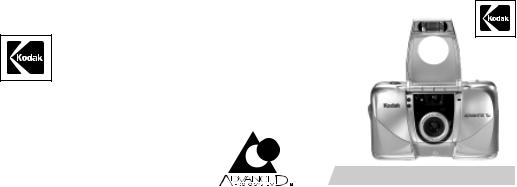
Kodak



T 50 Auto /T60 Auto-Focus
Camera
User’s Manual
Consumer Imaging
EASTMAN KODAK COMPANY
Rochester, NY 14650
© Eastman Kodak Company, 2002 |
|
|
New 11/02 |
Pt. No. 20230097 |
ENGLISH/ESPAÑOL/FRANÇAIS |

This device complies with part 15 of the FCC Rules. Operation is subject to the following two conditions: (1) this device may not cause harmful interference, and (2) this device must accept any interference received, including interference that may cause undesired operation.
NOTE: Your model camera has been tested and found to comply with the limits for a Class B digital device, pursuant to Part 15 of the FCC Rules. These limits provide reasonable protection against interference in residential use. The camera generates, uses and can radiate radio frequency energy and, if not used in accordance with the instructions, may cause interference to radio communications. There is no guarantee that interference will not occur. If this camera does cause interference to radio or television reception, which can be determined by turning the camera off and on, you may reduce the interference by the following:
—Reorient or relocate the receiving antenna.
—Increase the separation between the camera and the receiver.
—Consult the dealer or an experienced radio/television technician for help.
Changes or modifications not approved by the party responsible for compliance could void the user’s authority to operate the equipment.
This Class B digital apparatus meets all requirements of the Canadian InterferenceCausing Equipment Regulations.

KODAK ADVANTIX
T50 Auto/T60 Auto-Focus Camera
NEED HELP WITH YOUR CAMERA OR MORE INFORMATION ABOUT THE ADVANCED PHOTO SYSTEM?
Visit our Web site at http://www.kodak.com (for US) or http://www.kodak.ca (for Canada) or call: Kodak (US only) from 9:00 a.m. to 7:00 p.m. (Eastern time) Monday through Friday at 1-800-242-2424.
Kodak (Canada only) from 8:00 a.m. to 5:00 p.m. (Eastern time) Monday through Friday at 1-800-465-6325, ext. 36100; for the Toronto area, call 416-766-8233, ext. 36100. Have your camera available when you call.
For warranty purposes, keep your sales receipt as proof of the date of purchase.
ENGLISH
1

CONTENTS |
|
CAMERAIDENTIFICATION .................... |
3 |
CAMERAFEATURES ............................ |
6 |
ATTACHINGTHE STRAP ....................... |
8 |
LOADINGTHE BATTERIES .................... |
9 |
Low-battery indicator ...................... |
10 |
Battery tips .................................... |
10 |
Power shutdown ............................ |
12 |
LOADING THE FILM ............................ |
12 |
TAKING PICTURES ............................. |
14 |
Typical print sizes (formats) ........... |
15 |
Using the focus lock (T60 AF) ......... |
17 |
Tips for better pictures ................... |
18 |
FLASH AND PICTURE- |
|
TAKINGOPTIONS ............................. |
19 |
Flash/camera-ready-lamp |
|
indicator .................................... |
19 |
Auto flash ...................................... |
20 |
Fill flash ........................................ |
20 |
Flash off ........................................ |
20 |
Nightview with or without flash ....... |
21 |
Selecting the flash and |
|
picture-taking options .................. |
21 |
Flash-to-subject distance ............... |
23 |
USING THE SELF-TIMER .................... |
23 |
UNLOADING THE FILM ........................ |
25 |
Automatic rewind ........................... |
25 |
Manual rewind ............................... |
26 |
CARINGFORYOURCAMERA ............. |
26 |
TROUBLESHOOTING ........................... |
28 |
SPECIFICATIONS ................................ |
30 |
2

CAMERA IDENTIFICATION
3
4
2
1
5
6
7
10
8
9
1shutter button
2self-timer bulb
3lens cover/flash
4print-format switch
5meter-cell window
6viewfinder
7AF sensors (model T60 AF)
8lens
9strap post
10film-door lever
3
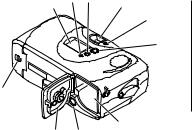
11 |
12 13 |
14 |
|
11 |
LCD panel |
|
|
||||
|
|
15 |
|
12 |
film-rewind button |
|
|
|
|
13 |
self-timer button |
|
|
|
16 |
14 |
viewfinder eyepiece |
|
|
|
15 |
flash/camera-ready- |
|
|
|
|
|
||
|
|
|
|
|
lamp indicator |
|
|
|
|
16 |
MODE button |
|
|
|
|
17 |
film chamber |
20 |
|
|
|
18 |
tripod socket |
|
|
|
19 |
film door |
|
|
|
|
|
||
|
|
|
|
20 |
battery door |
19 |
18 |
17 |
|
|
|
|
|
|
|
4
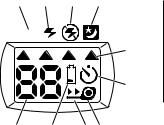
21 22 23 24
AUTO
25
26
30 |
29 |
28 |
27 |
21auto-flash symbol
22fill-flash symbol
23flash-off symbol
24nightview symbol
25mode-selector arrow
26self-timer indicator
27film-presence indicator
28film-motion indicator
29battery symbol
30picture counter
5

CAMERAFEATURES
Three Print Formats
•Choose from 3 picture sizes: Classic (C), Group/HDTV (H), or Panoramic (P). The masking inside the viewfinder changes to match each format selection.
Double Exposure Protection (DEP)
•You don’t need to worry about accidentally re-exposing your film. Your camera reads the Film Status Indicator (FSI) on the film cassette to prevent double exposures.
Flip Flash
•The extension of the flash helps to reduce red eyes in flash pictures and hand obstruction in front of the flash.
Easy, Drop-in Loading
•Easy, drop-in loading is fast and virtually error-free. The camera uses KODAK ADVANTIX Film. The film cassette communicates the status of film and becomes the carrier and storage container for the processed film.
6
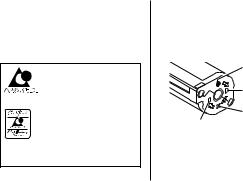
Safety-locked Film Door
•The safety interlock on the film door prevents the door from opening before the film is completely rewound.
Look for this logo to be certain that the film you buy is made for this camera.
Look for this logo to select a certified photofinisher for developing your film and to assure that you get all the features of the Advanced Photo System.
Film Status Indicator (FSI)
•An indicator advances from one symbol to another to identify the status of the film inside the cassette.
|
|
|
Unexposed |
|
|
1 |
2 |
|
|
|
|
|
|
|
Partially |
4 |
|
|
exposed |
|
3 |
|
Fully |
|
|
|
exposed
Processed negatives
7
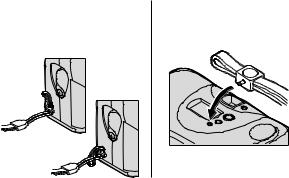
ATTACHING THE STRAP
Thread the strap’s shorter looped end under the strap post (9). Pull the longer end through the shorter loop and pull it tight.
NOTE: You can use the knob on the clasp of the camera strap to actuate the buttons on the camera.
8
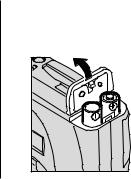
LOADING THE BATTERIES
This camera uses 2 AAA-size alkaline batteries that supply power for all camera operations.
NOTE: Insert the batteries before you load the film.
NOTE: Before you remove the old batteries, close the lens cover/ flash (3) to turn off the camera. When you replace batteries with film in the camera, replace them within 30 seconds or else the picture counter resets to 1.
1.Open the battery door (20).
2.Insert the batteries into the chamber.
3.Close the battery door.
9

Low-battery indicator 
Replace the batteries when the battery symbol (29) appears in the LCD panel (11).
NOTE: Before you remove the old batteries, close the lens cover/ flash (3) to turn off the camera. When you replace batteries with film in the camera, replace them within 30 seconds or else the picture counter resets to 1.
Battery tips
•Dispose of batteries according to local and national regulations.
•Keep spare batteries with you at all times.
•Keep batteries away from children.
•Store the batteries in their original packaging prior to use.
•Remove the batteries when you store the camera for an extended time.
•Do not use rechargeable batteries.
•Replace both batteries at the same time with the same brand and alkaline type.
10

CAUTION: Do not put the batteries in your pocket or in a container that contains coins or metal objects. If the batteries touch the metal objects, they may short circuit, discharge energy, become hot, or leak.
CAUTION: Do not try to take apart, recharge or short circuit the batteries, or subject them to high temperature or fire.
WARNING: In the unlikely event that battery fluid leaks onto your skin, rinse immediately with plenty of water. For additional information, contact Kodak Health, Safety and Environment Information in the U.S. at 1-585- 722-5151. Customers outside the U.S. can contact their local health care provider.
WARNING: In the unlikely event that battery fluid leaks inside the camera, U.S. customers can contact the Kodak Information Center (KIC) at 1-800-242-2424. Customers outside the U.S.
can contact their local Kodak
Customer Service representative. 11
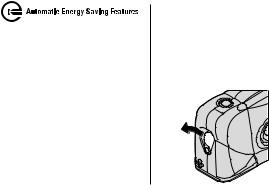
Power shutdown
To conserve battery power, the camera automatically goes to sleep after 4 minutes of nonuse. To wake up the camera, take a picture or close and reopen the lens cover. Turn off the camera when it is not in use to further extend the battery life.
LOADING THE FILM
You can load film with the camera on or off.
NOTE: Insert the batteries before you load the film.
1.Push the film-door lever (10) to open the film door (19).
12
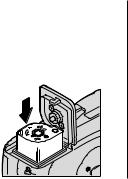
2.Insert the film cassette completely into the film chamber (17).
•Make sure the Film Status Indicator (FSI) on the film cassette is at ● (#1 position) for a new cassette.
•Do not force the film cassette into the film chamber.
3 |
4 |
2 |
1 |
3.Close the film door to start the automatic film advance.
•The picture counter (30) in the LCD panel (11) displays “1.”
•After you close the safetyinterlocked film door, you cannot open the door until the film is completely rewound into the film cassette.
13
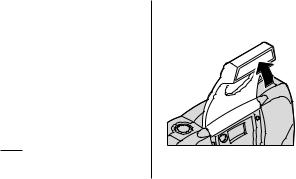
TAKING PICTURES
You can take Classic (C), Group/ HDTV (H)*, and Panoramic (P) pictures on the same film cassette. Your photofinishing costs are based on the format used.
*High Definition Television (HDTV) prints are the same aspect ratio as the TV for CD interface capabilities.
1.Open the lens cover/flash (3) to raise the flash and to turn on the camera.
14
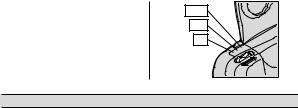
2.Slide the print-format switch (4) to C, H, or P. The viewfinder changes to show the selected picture size.
P
H
C
CHP
Typical print sizes (formats) |
|
|
C |
H |
P |
Classic |
Group (HDTV) |
Panoramic |
3.5 x 5 in. or 4 x 6 in. |
3.5 x 6 or 4 x 7 in. |
3.5 x 8.5 in. to 4 x 11.5 in. |
(88.9 x 127 mm or |
(88.9 x 152 mm or |
(88.9 x 216 mm to |
102 x 152 mm) |
102 x 178 mm) |
102 x 292.7 mm) |
NOTE: Your photofinisher generally provides 4 x 6, 4 x 7, and
4 x 11.5 in. (102 x 152, 102 x 178, and 102 x 292.7 mm) sizes. Some local printers may offer 3.5 x 5, 3.5 x 6, and 3.5 x 8.5 in. (88.9 x 127, 88.9 x 152, and 88.9 x 216 mm) sizes.
15
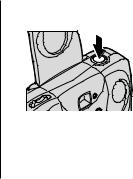
3.Frame your subject within the viewfinder eyepiece (14).
Model T60 AF (Auto Focus):
For a sharp picture, stand at least 2.6 ft (0.8 m) from your subject.
Model T50 AUTO:
For a sharp picture, stand at least 3.3 ft (1.0 m) from your subject.
4.Press the Shutter button (1) to take the picture.
CHP
16

Using the focus lock (model T60 AF)
The T60 AF (Auto Focus) camera focuses on the subject that appears in the center of the viewfinder eyepiece. To focus on the subject positioned outside of the center, use the focus lock as follows:
1.Place the center of the viewfinder eyepiece (14)
on the subject that you want focused in the picture.
2.Partway press and hold the shutter button (1) to lock the focus position.
3.With your finger still on the shutter button, move the camera until your subject is where you want it within the viewfinder eyepiece.
4.Completely press the shutter button to take the picture.
17

Tips for better pictures
•Hold your camera steady
by keeping your elbows close to your body when you press the shutter button to avoid blurry pictures.
•Keep your pictures simple. Move close enough to your subject so that it fills the viewfinder but not closer than 2.6 ft
(0.8 m) with the T60 AF and
3.3 ft (1.0 m) with the T50 AUTO.
•Take pictures at the subject’s level. Kneel down to take pictures of children and pets.
•Keep the sun behind you to
provide the best subject 18 illumination.
•Hold your camera vertically to capture tall, narrow subjects, such as a waterfall, skyscraper, or a person.
•Add interest to your picture by framing it with a tree branch, a window, or even the rails of a fence.
•Stand at an angle to shiny surfaces like windows or mirrors to avoid flash reflection and bright spots in your pictures.
•Turn on all the room lights and have your subject look at the lights to reduce red eyes in flash pictures.
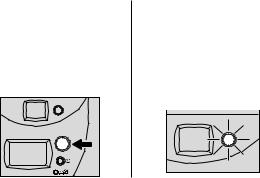
FLASH AND PICTURETAKING OPTIONS
Repeatedly press the MODE button (16) to select the flash mode that best suits your subject and surroundings or to select a picture-taking mode that lets you tailor the camera’s fully automatic settings.
MODE |
Flash/camera-ready-lamp indicator
When the flash/camera-ready- lamp indicator (15) “blinks” the camera is not ready to take the picture. In the fill-flash mode, the mode-selector arrow (25) in the LCD panel (11) “blinks.” Wait for the lamp to turn off or the modeselector arrow to stop blinking before you take the picture.
19

Auto flash AUTO 
In dim light, such as indoors or outdoors in heavy shade, or on dark overcast days, you need flash. Your camera features an automatic flash that fires when you need it. The flip-up flash helps to minimize red eyes in flash pictures and prevents hand obstruction in front of the flash.
Fill flash 
When in bright sun or when bright light comes from behind the subject, dark shadows (especially on faces) may occur. Use fill flash to lighten these shadows and to add sparkle to your subject’s eyes. 20
Flash off
When you do not want to use the flash, especially indoors where flash is prohibited, or to capture the ambiance of existing light, use the flash-off feature. Use a tripod or place the camera on another firm support, and use high-speed film because the shutter speed in these situations is generally slow.

Nightview with or without flash
Nightview with flash: The camera balances the flash and existing light exposure so you can take beautiful pictures at sunset
or night.
Nightview without flash: You can capture the natural existing light of city scenes or fireworks at night.
Use a tripod or place the camera on another firm support, and use high-speed film because the shutter speed at night is generally slow.
Selecting the flash and picture-taking options
1.Open the lens cover/flash (3) to raise the flash and to turn on the camera.
2.Repeatedly press the MODE button (16) until the modeselector arrow (25) points to the auto-flash symbol (21), fill-flash symbol (22), flash-off symbol (23), nightview
symbol (24) with flash or nightview symbol (24) without flash.
21

3.Frame your subject within the viewfinder eyepiece (14) keeping your subject within the distance range for the speed of film in your camera (see Flash-to-subject distance table).
4.Press the shutter button (1) to take the picture. When you take nightview pictures, press
and hold the shutter button for 4 seconds before you release the button.
NOTE: If you release the shutter button before
4 seconds, the nightview setting cancels.
Fill flash and flash off modes remain selected after you take the picture. To cancel the selection, press the MODE button (16) or close and reopen the lens cover flash to return to the auto-flash mode.
22

Flash-to-subject distance
ISO |
T60 AF |
T50 AUTO |
film |
|
|
speed |
|
|
50 |
2.6 to 7 ft |
3.3 to 7 ft |
|
(0.8 to 2.1 m) |
(1.0 to 2.1 m) |
100 |
2.6 to 10 ft |
3.3 to 10 ft |
|
(0.8 to 3.1 m) |
(1.0 to 3.1 m) |
200 |
2.6 to 13 ft |
3.3 to 13 ft |
|
(0.8 to 4.0 m) |
(1.0 to 4.0 m) |
400 |
2.6 to 18 ft |
3.3 to 18 ft |
|
(0.8 to 5.5 m) |
(1.0 to 5.5 m) |
800 |
2.6 to 28 ft |
3.3 to 28 ft |
|
(0.8 to 8.5 m) |
(1.0 to 8.5 m) |
USING THE SELF-TIMER
Use this feature to include yourself in pictures.
1.Attach a tripod to the camera tripod socket (18) or place the camera on a firm surface.
2.Open the lens cover/flash (3) to raise the flash and to turn on the camera.
23

3. Press the self-timer button (13).
MODE
4.Frame your subject within the viewfinder eyepiece (14) and allow room for yourself.
5.Press the shutter button (1) to start the timer.
6.Quickly position yourself in the composed picture.
•Before the shutter releases, the self-timer bulb (2) glows and then blinks during the ten seconds of countdown.
•To cancel the self-timer selection before the shutter releases, close the flash.
•The self-timer turns off after the shutter releases.
24
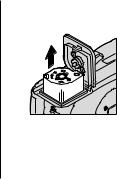
UNLOADING THE FILM
Automatic rewind
The camera automatically rewinds the film into the cassette after the last exposure.
1.Wait for the camera motor to stop to ensure that the film is completely rewound into the film cassette.
•The film-motion indicator (28) in the LCD panel (11) “blinks” as the film is rewinding.
2.Push the film-door lever (10) to open the film door (19) and to partway release the film from the film chamber (17).
3.Remove the film cassette from the camera and reload with new KODAK ADVANTIX Film.
3 |
4 |
2 |
1 |
•The FSI on the fully exposed film cassette is at
(#3 position).
25

Manual rewind
If you do not want to use the entire film, you can manually start the automatic rewind.
Gently press the film-rewind button (12) by using the knob on the clasp of the camera strap.
NOTE: You cannot reload a partially exposed film cassette and continue to take pictures.
26
CARING FOR YOUR CAMERA
•Protect the camera from dust, moisture, sudden impact, and excessive heat.
CAUTION: Do not use solvents or harsh cleansers on the camera body.
•If the lens appears dirty, breathe on it to form a mist and wipe the surface gently with a soft, lintless cloth or camera lens-cleaning tissue. Never wipe a dry lens.

CAUTION: Use solvents or solutions designed for cleaning camera lenses. Do not use chemically treated tissues intended for cleaning eyeglasses.
•Remove the batteries when you store the camera for an extended time.
WARNING: To prevent possible damage and electrical shock, do not attempt to disassemble or repair the camera or flash unit by yourself.
DISPOSAL: The camera contains a small amount of lead in the circuit board. Disposal of lead may be regulated due to environmental considerations. For disposal or recycling information, contact your local authorities. In the US, you can also visit the Electronics Industry Alliance at www.eiae.org.
27
TROUBLESHOOTING
What happened |
Probable cause |
Solution |
Camera will |
There are no more |
Rewind film and |
not operate |
pictures remaining |
remove from camera |
|
Batteries weak, |
Replace or reload the |
|
dead, missing, or |
batteries |
|
improperly inserted |
|
Film does not |
Batteries weak, |
Replace or reload the |
advance or |
dead, missing, or |
batteries |
rewind |
improperly inserted |
|
Picture counter |
Took more than |
Replace batteries |
resets to 1 after |
30 seconds to replace |
within 30 seconds |
replacing batteries |
the batteries |
|
with film in camera |
|
|
|
|
|
28
